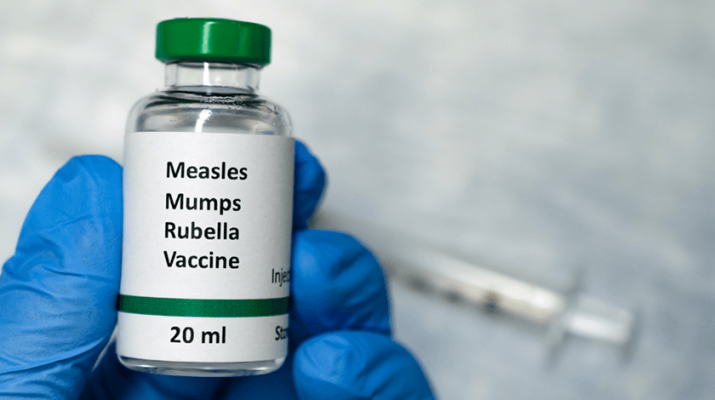By Ernst Lamothe Jr.

This was a banner year for measles and mumps. Not good news for health officials and various communities that were rocked by these two viruses.
The number of patients diagnosed with measles in the United States grew substantially with more than 900 confirmed cases in 23 states. Measles is an infectious viral disease-causing fever and a red rash on the skin, typically occurring in childhood.
The United States is presently seeing the highest number of measles cases since the disease was considered eliminated in this country in the year 2000. Measles were reported several states, including New York.
“We have seen the substantial positive results in society when vaccinations occurs,” said UBMD physician Diana Wilkins. “They can help prevent deadly diseases and help protect the community at large by reducing the spread of that disease.”
Wilkins, assistant dean for graduate medical education and clinical assistant professor of family medicine at the University at Buffalo Jacobs School of Medicine, discusses five essential vaccinations.
1. DTaP
DTaP vaccine can help protect children from diphtheria, tetanus and pertussis. The vaccine is given at 2 months, 4 months, 6 months and 15 to 18 months, and again at 4 to 6 years of age. Diphtheria can cause breathing problems, paralysis and heart failure. Before vaccines, diphtheria killed tens of thousands of children every year in the United States. Tetanus causes painful tightening of the muscles. It can cause locking of the jaw so you cannot open your mouth or swallow. About one person out of five who gets tetanus dies, according to the CDC. Pertussis, also known as whooping cough, causes coughing spells so bad that it is hard for infants and children to eat, drink, or breathe. It can cause pneumonia, seizures, brain damage, or death.
“Now even mothers in their third trimester are being encouraged to get the DTaP shot so the immunity can be transferred to their babies,” said Wilkins. “Also, when kids that follow the vaccine schedule early on it sets them up for a strong immunity throughout childhood.”
2. Measles Mumps and Rubella
During the first six months of this year, 44 states and the District of Columbia reported mumps infections in 1,471 people, according to the CDC.
Before the U.S. mumps vaccination program started in 1967, about 186,000 cases were reported each year, but the actual number of cases was likely much higher due to underreporting. Since the two-MMR dose vaccination program was introduced in 1989, U.S. mumps cases decreased more than 99 percent, with only a few hundred cases reported most years. However, since 2006, there have been several increases in cases and outbreaks about every five years, according to the CDC.
“This vaccine is required before kids enter school-age environments,” said Wilkins. “In New York, the governor signed legislation taking away non-medical exemption from schools when it comes to vaccines. We recommend all children get two doses of measles-mumps-rubella vaccine starting with the first dose at 12 through 15 months of age, and the second dose at 4 through 6 years of age.”
3. HPV
Human papillomavirus is a group of more than 150 viruses. Many people who get HPV have no symptoms. Some people who get HPV develop warts in their genital area. Some HPV infections do not go away and can cause cancer, such as cervical cancer, cancer in or outside of the vagina, cancer of the penis, cancer of the anus or rectum and cancer of the throat. HPV spreads by intimate skin-to-skin contact.
“Because this vaccine has been known to help with several kinds of cancer, there are various reasons why this should be a vaccine that people take seriously,” said Wilkins. “We also tell women that is one of the reasons why they should continue to receive regular pap smears.”
4. Flu Shot
Since 2010, CDC estimates that flu has resulted in between 140,000 and 960,000 hospitalizations each year. About 20,000 children under age 5 are hospitalized due to flu each year. On average, nearly 100 children die in the US from the flu and its complications each year.
“We cannot underestimate how essential the flu vaccine is for society,” said Wilkins. “Many times the reason why we push for our adult community to get vaccinated is because they can pass dangerous diseases to newborns and infants whose immune system is not strong enough to combat it at this time. It leaves some of the most vulnerable members of our society unprotected when we don’t get vaccinated.”
5. Shingles
Shingles is a viral infection that causes a painful rash. Although shingles can occur anywhere on the body, it most often appears as a single stripe of blisters that wraps around either the left or the right side of your torso.
“Shingles is incredibly painful and can leave permanent rashes all through your body,” said Wilkins. “They have even changed the shingles vaccine so that it can accommodate people’s immune system.

